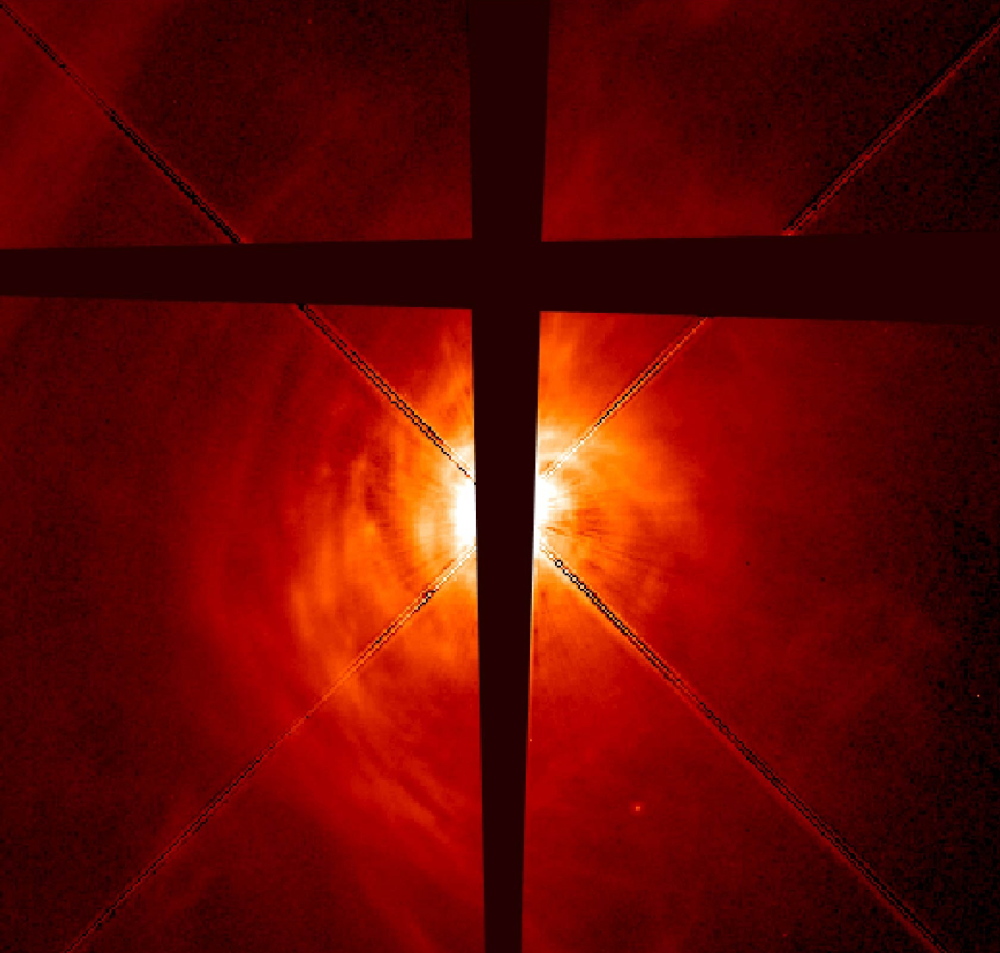Now the holidays are behind us, and our minds turn to the grueling task of making the journey through deep winter. It is a labor like no other. It includes not only shoveling snow (cf. This past weekend), some dicey drives home (cf. ditto), and two or three or more times the thermometer is going to register so low in the minus-whatever range that you won’t want to look at it until the sun hits it tomorrow afternoon (cf. last night). It will be awhile before the length of daylight seems like longer than a lunch break.
Your mind has to cope with it somehow. I am not making this up.
Depending on your ideas about what the cosmos is made of, winter brings not only eternally long night, but with it, moisture-free air that materializes crystal-clear skies that your mind can use, if you want to go there. Balls of thermonuclear brightness fire beams of light down into your transparent eyeballs and trigger feelings of enormity, minuteness, awe, kaleidoscopy, and possibly divinity, grace or terror.
You don’t really get to pick, when you’re standing there under Orion’s southern-sky-spanning belt, scabbard and bow on winter nights. If you lean back a little bit, you’re looking at a sort of trapezoidal bunch of stars (including the sixth-brightest in the sky, Capella) that make up the constellation Auriga, the charioteer. Lean dizzily further back and you’re looking upside down at the North Star. You might have more common sense than me, and just turn around to see it, Polaris, at the end of the Little Dipper’s handle.
But in deep winter, I stop having that kind of common sense. The kaleidoscopic night-shining sky rattles my brain. I wonder if there are aliens out there.
This question by itself is pretty commonly asked nowadays, so there’s no real lack of psychological balance there. It’s the possible answers that bend your mind out of shape.
The gargantuan number of stars in the universe implies there’s a reasonably good chance creatures of advanced intelligence exist elsewhere. This is a commonly accepted basic line of reasoning. But if so, asked Enrico Fermi (a superhero of 20th century physics) back in 1950, why haven’t we seen them? This is known in UFO and search for extraterrestrial intelligence studies as the Fermi Paradox.
Six and a half decades later the evidence for the possibility of extraterrestrial life has increased. As of Jan. 5, astronomers have confirmed the existence of 1,855 planets orbiting other stars. A study in 2013 reported it’s likely that almost all the 100 billion or so stars in our galaxy have planets revolving around them and that 17 percent of those stars probably have a roughly Earth-sized planet in a tight orbit. Estimates of the total number of galaxies in the universe are as high as 225 billion, and some astronomers think that’s probably a conservative figure.
So with all these possible homes, where are the putative aliens? The journey from star to star is prohibitively long, so maybe there’s no sign of them because they just haven’t gotten here yet.
But is it really true that there’s no sign of them?
It depends on how you read the thousands of UFO reports that have been investigated and confirmed to be neither hoaxes nor mistakes, but actually unidentifiable flying objects. The fact is that UFOs and the phenomena associated with them are very well-studied by credible, credentialed researchers and by government agencies such as the CIA, National Security Agency, U.S. Air Force and more.
And then there are the reports of people being abducted by nonhuman entities. These incidents, too, undergo meticulous investigations. In the 1990s, Harvard University psychiatrist John Mack spent several years interviewing scores of people who described abduction experiences and analyzing their descriptions. He concluded that neither mental illness nor dishonesty was a prevailing problem among them, that there is no conventional scientific explanation for whatever is happening, and that the people’s own stories best describe it.
A knowledgeable correspondent explained to me recently that “it’s fairly clear that we are being visited by multiple species. … I think some of the visitors are interplanetary, some are inter-dimensional and some are time-travelers.”
Like Mack’s study, this is not dreamy science fantasy. These categories of alien origins are more or less conventional in serious discussions of abduction narratives.
Stephen Hawking, of all people, has warned that SETI programs are inherently dangerous: The aliens, should they arrive, may have bad intentions and the capability of carrying them out. So do we really want to attract their attention? he asked a couple of years ago, turning the Fermi Paradox into the Hawking Admonition, perhaps.
I guess my credibility as a backyard naturalist is probably shot when I disclose that the winter sky prompts such thoughts. But winter is prohibitively long here, it’s just getting underway, and my mind has miles to go when the snow’s too deep for the rest of me to get very far afoot. If there’s anything the last 500 years of science has taught us, it’s that the universe keeps turning out to be much, much larger than we thought. You really don’t get to pick.
Dana Wilde lives in Troy. His writings on the stars, planets and galaxies are collected in “Nebulae: A Backyard Cosmography,” available from online booksellers or by contacting the author at naturalist@dwildepress.net. Backyard Naturalist appears the second and fourth Thursdays each month.
Send questions/comments to the editors.




Comments are no longer available on this story